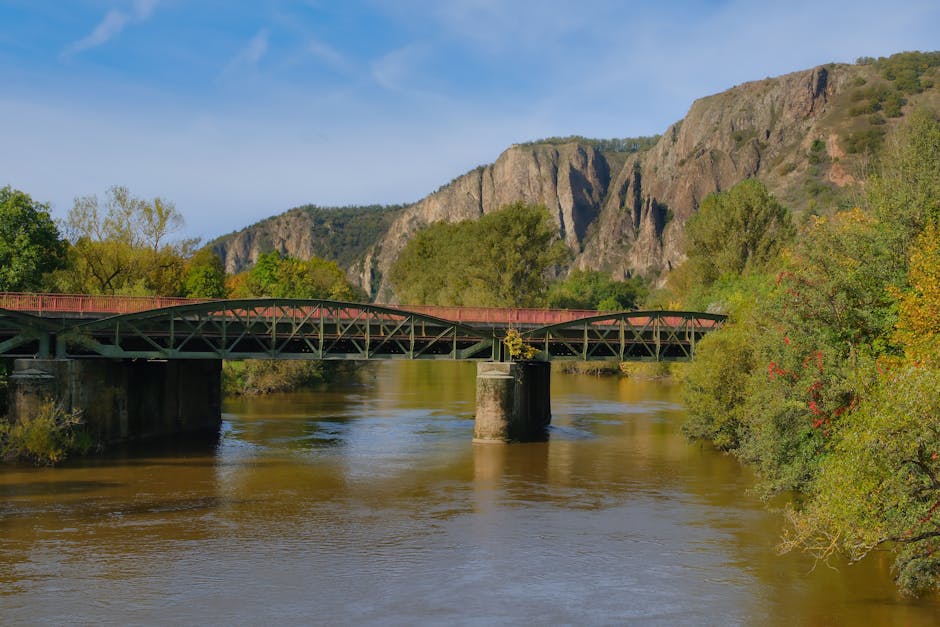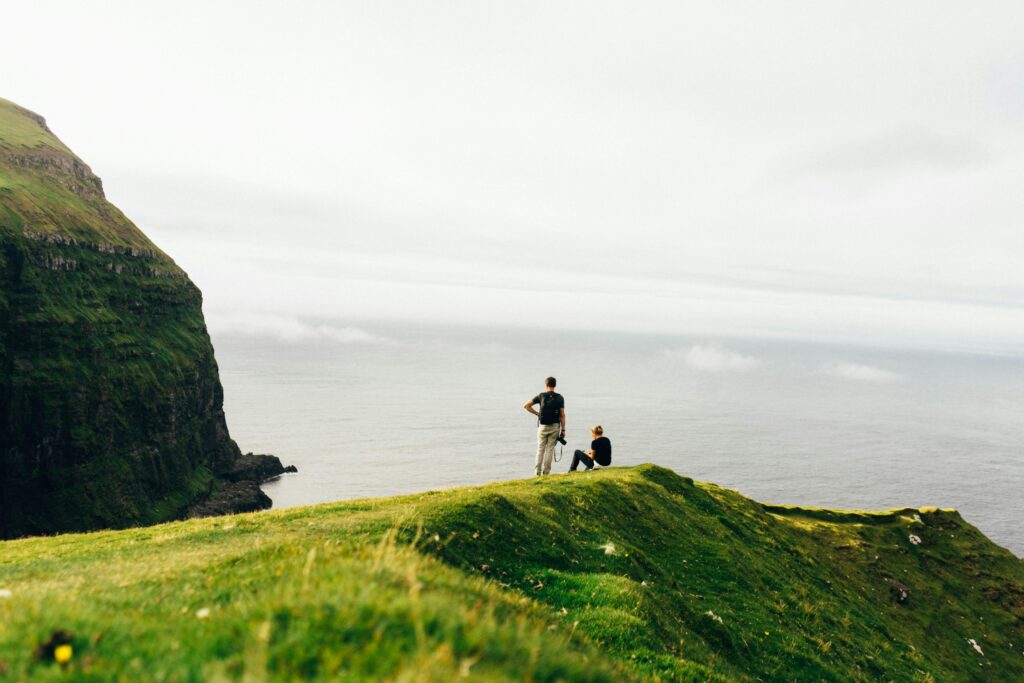Introduction
Ribe, Denmark’s oldest town, is a charming medieval gem where cobblestone streets whisper tales of Vikings, and half-timbered houses lean over narrow alleys like storytellers. Founded in the early 8th century, Ribe offers a rare blend of history, culture, and natural beauty—making it a must-visit for travelers seeking an authentic Danish experience.

I first visited Ribe on a misty autumn morning, the scent of freshly baked wienerbrød (Danish pastries) drifting from a corner bakery. The town’s quiet magic, where storks nest on rooftops and Viking reenactments bring history to life, made me fall in love instantly. This guide will help you uncover Ribe’s best attractions, hidden gems, and practical tips for an unforgettable trip.
Why Visit Ribe?
✔ Denmark’s Oldest Town – Walk in Viking footsteps
✔ Fairytale Architecture – Colorful houses & medieval charm
✔ Nature & Wildlife – Wadden Sea National Park nearby
✔ Cultural Festivals – Viking markets, Christmas markets
✔ Authentic Danish Cuisine – From smørrebrød to æbleskiver
CTA: Download our free Ribe map to navigate like a local!
Best Time to Visit Ribe
Ribe is a year-round destination, but each season offers a different experience.
Spring (April-May)
- Pros: Mild weather (10-15°C), blooming flowers, fewer crowds
- Cons: Occasional rain showers
- Highlight: Stork sightings as they return to nest on rooftops
- Local Tip: Visit in late April for Stork Day, a celebration of these majestic birds returning to Ribe.
Summer (June-August)
- Pros: Warm weather (18-25°C), long daylight hours (sunset at 10 PM!), Viking markets
- Cons: Peak tourist season; book accommodations early
- Highlight: Ribe Viking Festival (early May)—a lively event with battles, crafts, and feasts straight from the Viking Age.
Autumn (September-October)
- Pros: Golden foliage, cozy cafés, lower prices
- Cons: Cooler evenings (pack layers)
- Highlight: Harvest festivals in nearby villages, where you can taste local apple cider and freshly baked rye bread.
Winter (November-March)
- Pros: Christmas markets, snow-dusted streets, intimate atmosphere
- Cons: Shorter days (sunset by 4 PM), some attractions close
- Highlight: Ribe’s Christmas Market—one of Denmark’s most magical, with mulled wine (gløgg), handmade crafts, and carol singers.
Pro Tip: Visit in May for the Viking Festival or December for the Christmas market. For fewer crowds, September is ideal.
How to Get to Ribe
By Air
- Nearest Airport: Billund (BLL) – 40 min drive (car rentals available)
- Alternatives:
- Esbjerg (EBJ) – 30 min drive (smaller airport, fewer flights)
- Copenhagen (CPH) – 3.5h by train/car
By Train
- From Copenhagen: 3h via IC train to Bramming + 20-min local train to Ribe (~300 DKK one-way).
- From Aarhus: 2h via Esbjerg (change at Bramming).
- Pro Tip: Book tickets on DSB.dk for discounts.
By Bus

- From Esbjerg: 30 min via FlixBus (~50 DKK).
- From Billund: 1h via Kombardo Express (~100 DKK).
By Car
- From Copenhagen: 3.5h via E20 (toll-free).
- From Aarhus: 1.5h via Route 18.
- Parking: Free outside the center; paid zones near attractions (~20 DKK/hour).
CTA: Book train tickets in advance for the best prices!
Top Attractions in Ribe
1. Ribe Cathedral (Ribe Domkirke)
- Why Visit? Denmark’s oldest cathedral, dating back to the 12th century, with a stunning mix of Romanesque and Gothic architecture.
- Highlights:
- Climb the tower (248 steps!) for panoramic views of the town and Wadden Sea.
- See the Cathedral Museum, showcasing medieval artifacts.
- Cost: Free entry; 60 DKK (~$9) for tower access.
- Pro Tip: Visit at sunset for golden-hour photos over the red rooftops.
2. Viking Museum (Ribe VikingeCenter)
- Why Visit? An immersive open-air museum where history comes alive.
- Highlights:
- Village Reenactments: Watch blacksmiths, archers, and farmers in action.
- Hands-On Activities: Try archery, coin minting, or baking Viking bread.
- Cost: 150 DKK (~$22); family tickets available.
- Best Time: Summer for live demonstrations.
3. Wadden Sea National Park (UNESCO Site)
- Why Visit? A unique ecosystem of tidal flats, home to seals and migratory birds.
- Activities:
- Mudflat Walking: Guided tours at low tide (~250 DKK).
- Seal Safari: Boat trips to sandbanks (~300 DKK).
- Pro Tip: Wear waterproof boots—the mud is slippery!
4. Ribe’s Old Town
- Why Visit? A maze of cobbled streets lined with 16th-century houses.
- Must-See Spots:
- Puggård’s Garden: A hidden medieval herb garden.
- Ribe Kunstmuseum: Small but excellent art gallery.
- Free Activity: Join the Night Watchman’s Tour (8 PM daily)—a lantern-lit walk with eerie tales.
Hidden Gem: Mandø Island – A car-free island perfect for cycling and birdwatching. Reachable by tractor bus (!) during low tide.
Where to Stay in Ribe
Budget (Under 600 DKK/night)
- Danhostel Ribe – Dorms from 200 DKK; great for backpackers.
- Hotel Dagmar – Historic charm with budget rooms (from 500 DKK).
Mid-Range (600-1200 DKK/night)
- Weis Stue – Cozy inn with a renowned restaurant (try their smørrebrød!).
- Ribe Byferie Resort – Family-friendly cabins with kitchenettes.
Luxury (1200+ DKK/night)
- Hotel Ribe – Boutique riverside stay with a gourmet breakfast.
Pro Tip: Book early in summer—Ribe fills up fast!
Local Cuisine: What to Eat in Ribe

- Smørrebrød – Open-faced sandwiches (try Weis Stue’s herring version).
- Flæskesteg – Roast pork with crispy crackling (Sælhunden does it best).
- Æbleskiver – Danish pancake balls (best at Christmas markets).
Personal Anecdote: I still dream about the rugbrød (rye bread) at Sælhunden—thick, dark, and slathered in butter, paired with local cheese.
3-Day Ribe Itinerary
Day 1: History & Culture
- Morning:
- Ribe Cathedral + tower climb.
- Coffee at Café Wilder (try their cinnamon rolls).
- Afternoon:
- Viking Museum (join a workshop).
- Lunch at Weis Stue (order the smørrebrød platter).
- Evening:
- Night Watchman’s Tour.
- Dinner at Sælhunden (flæskesteg + local beer).
Day 2: Nature & Adventure
- Morning:
- Wadden Sea boat tour (seal spotting!).
- Afternoon:
- Mandø Island cycling (rent bikes at the harbor).
- Evening:
- Sunset picnic by Ribe River.
Day 3: Day Trips & Relaxation
- Morning:
- Esbjerg (visit The Men at Sea statues).
- Afternoon:
- Ribe Art Museum.
- Evening:
- Cozy dinner at Weis Stue.
CTA: Customize your Ribe itinerary with our interactive planner!
Travel Tips for Ribe
✔ Currency: Danish Krone (DKK) – Cards widely accepted.
✔ Language: Danish, but English is common.
✔ Transport: Walk or bike—Ribe is tiny! Rent bikes (~100 DKK/day).
✔ Packing: Waterproof jacket (rain is frequent).
Pro Tip: Rent a bike to explore beyond the center.
Frequently Asked Questions (FAQ)
1. Is Ribe worth visiting?
Absolutely! It’s one of Denmark’s most picturesque and historic towns, perfect for culture lovers and nature enthusiasts.
2. How many days do I need in Ribe?
2-3 days is ideal to see the highlights without rushing.
3. Can I visit Ribe without a car?
Yes! Trains and buses connect well, and the town is walkable.
4. What’s the best day trip from Ribe?
Mandø Island for nature or Esbjerg for modern art.
5. Is Ribe expensive?
Moderate—budget ~600 DKK/day for meals & attractions.
Conclusion: Start Your Ribe Adventure Today!
Ribe is a living postcard of Denmark’s past, where every corner tells a story. Whether you’re climbing cathedral towers, tasting Viking-era food, or biking through tidal flats, this town will enchant you.
Final CTA: Book your Ribe trip now before peak season hits!



